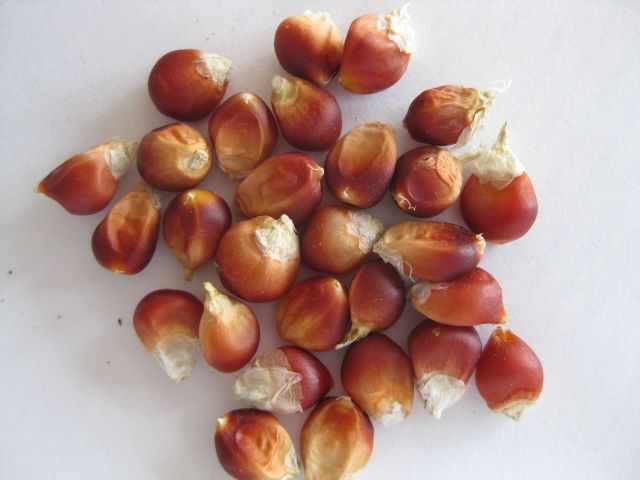I received a gift from west coast visitors – Floriani Red Flint Corn. The accompanying information mentions it is a staple polenta corn and family heirloom grown for many years in the Valsugana Valley of Italy. The uninitiated would assume this corn originated in Italy, but it did not.

I am enjoying snippets from “1491” by Charles Mann which describes the Americas before Columbus. As we know, the corn kernels we eat grow on a corn cob. It is also apparent that a corn cob cannot self seed – it has no mechanism to shatter or shake the kernels off the cob/husk and the kernels will not survive a trip through the intestines of a bird or animal. Corn (maize) is entirely dependent on humans to seed it in the fields (unlike wheat, rice, millet and barley, the ancestors of which could self seed). If corn cannot self seed then how did it originate?
A recurring theme in “1491” is that the inhabitants of the Americas prior to Columbus were far more sophisticated than most of us suppose. Mann states that the early inhabitants of Mesoamerica (roughly Central America) developed not only corn but also tomatoes, peppers, most of the squashes and many of the beans. But corn is the most intriguing. Since it cannot reproduce itself the Indians must have developed it from another species. The closest genetic relative is a grass called teosinte, which looks very different. A debate raged amongst scientists as to whether corn developed from a mutation of teosinte or from a now vanished ancestor, Tripsacum, or from repeated mixings of other types of grasses. There appears to be agreement, however, that its development must have required biological manipulation by determined, skilled plant breeders.
There is a wide variety of corn in lots of different colored kernels and sizes with more than 50 genetically distinguishable “landraces”. Because corn is open pollinated and the wind can blow the pollen from field to field, if uncontrolled the result would be an homogeneous entity. But because early farmers sorted their seed and were careful with their plantings, they were able to maintain a large variety of different corn.
Mann also mentions that Indian farmers grown corn in a milpa, or maize field and will plant a dozen crops at once including corn, avocados, multiple varieties of squash and bean, melon, tomatoes, chilis, sweet potato etc. The “three sisters” corn, squash and beans are well known in permaculture but the milpa which Mann refers to is far more extensive. He suggests the milpa is superior not only to monoculture and its dependence on artificial fertilizers, but also to the practice of crop rotation, and that this is evidenced by its continuous cultivation and long term use.
It is corn planting time (advanced by the unseasonal warm weather we are having), the rain has let up, and I am heading for the field.
